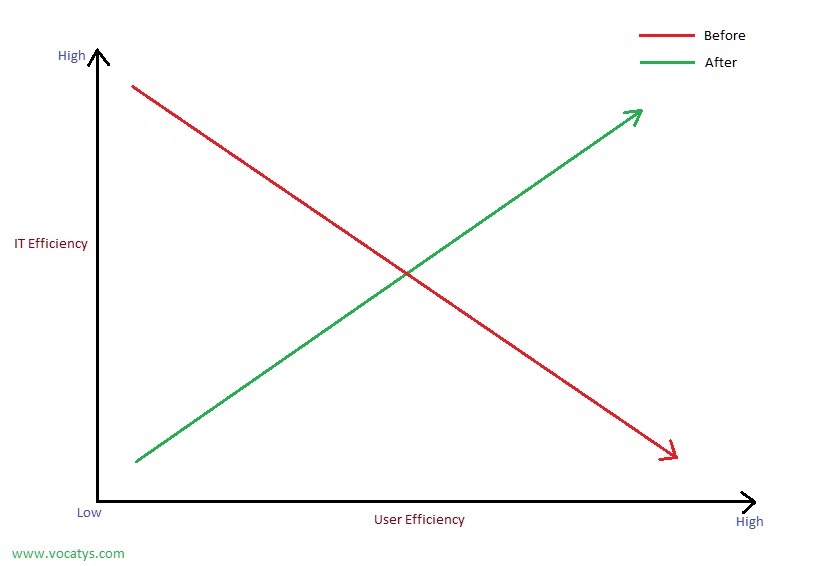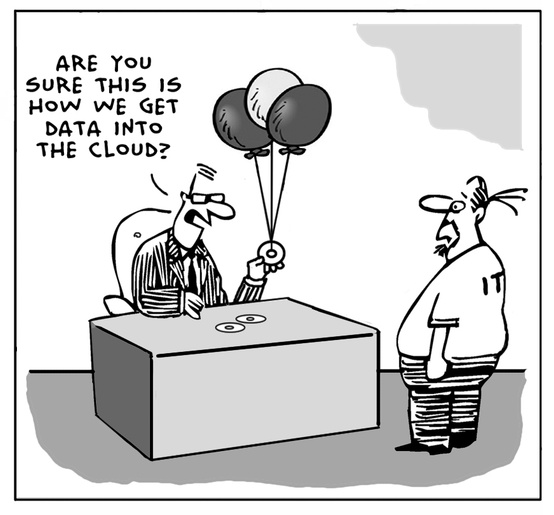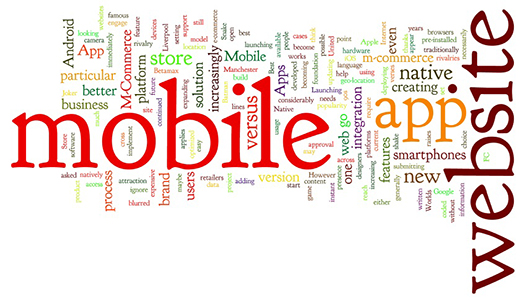Mathematically speaking, the IT department’s efficiency is inversely proportional to the users’ efficiency. Neither can be truly efficient without costing the other its own. But the biggest loser in this scenario is the organisation itself.
Now imagine if users didn’t have to get clearance from the IT department every time they needed access to new programs, remote access to files and emails. And at the same time, IT department didn’t need to worry about day to day upkeep of eternally outdated hardware, never ending security patches and software updates but instead focussing on the very needs of the business and its users that they are there to service.
Imagine if their efficiencies were directly proportional to the users’.
Here are two easy solutions that have started transforming that imagination into reality for many.
Cloud Computing
While the concept and its origins can be traced back to 1950s, it’s only since around 2006 when Amazon.com introduced Elastic Compute Cloud, has it come into popularity. Cloud computing has a wide range of benefits for virtually any organisation of any size, within any industry sector including government, education and not-for-profits.
One of the key benefits is the ability to use computing as a service or utility. This way businesses do not need to buy and maintain expensive hardware and software. They just pay a monthly or yearly fee to access as much or as little computing power and space required.
It creates a major shift in focus for the IT department. Now for the first time instead of worrying about system security and uptime, IT can focus on the actual needs of the users and actually play an intrinsic role in the growth of the business. User on the other hand will have access to updated technology and systems allowing them to do their jobs without having to worry about IT trying to control everything they do.
Mobile Technologies
The dramatic and continual rise of smartphones is a great indicator of the seismic shift in our day to day computing. In the vast majority of the cases we are carrying mobile phones in our pocket that are more capable than the computers we use at work. The software and hardware of these phones and tablets are designed and built with almost surgical focus on user-friendliness and rarely need any tech support. A vast array of enterprise apps, on the other hand, seamlessly convert them into business devices that can be easily used and managed by users themselves.
Its desirability and competitive pricing has resulted in such levels of popularity that according to various reports, by the end of 2015 there would be more internet connected smart devices than people on earth. This fact has also given rise to BYOD (Bring Your Own Device) model, allowing employees to use their own smartphones, tablets and/or computers for work.
Without the need to constantly maintain and troubleshoot ageing computers IT can once again focus on being a true business partner that can leverage emerging technologies to increase user productivity and engagement. Users too, will see increased efficiency due to free and flexible access to a host of services that work effortlessly without the constant need for support.
In conclusion, these emerging technologies are already making their presence felt. The opportunities and threats they present are extreme. Depending on the choices they make, businesses can overthrow their biggest competitors, breakaway from the peloton or succumb to the smallest player in the industry. Strategic use of technologies to eliminate operational inefficiencies will be critical to the success of any organisation.
This article was written by Austin D'Mello, Managing Partner of Vocatys, an emerging technology consulting company. If you liked this article please share it with your network. You can also subscribe to the monthly Vocatys newsletter by emailing us at [email protected].
References:




 RSS Feed
RSS Feed